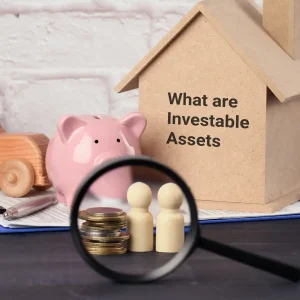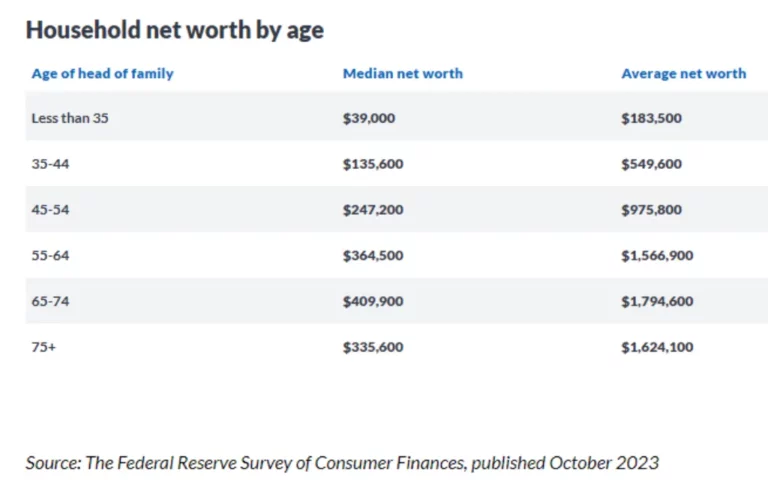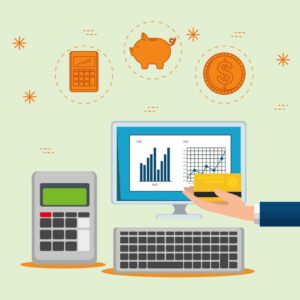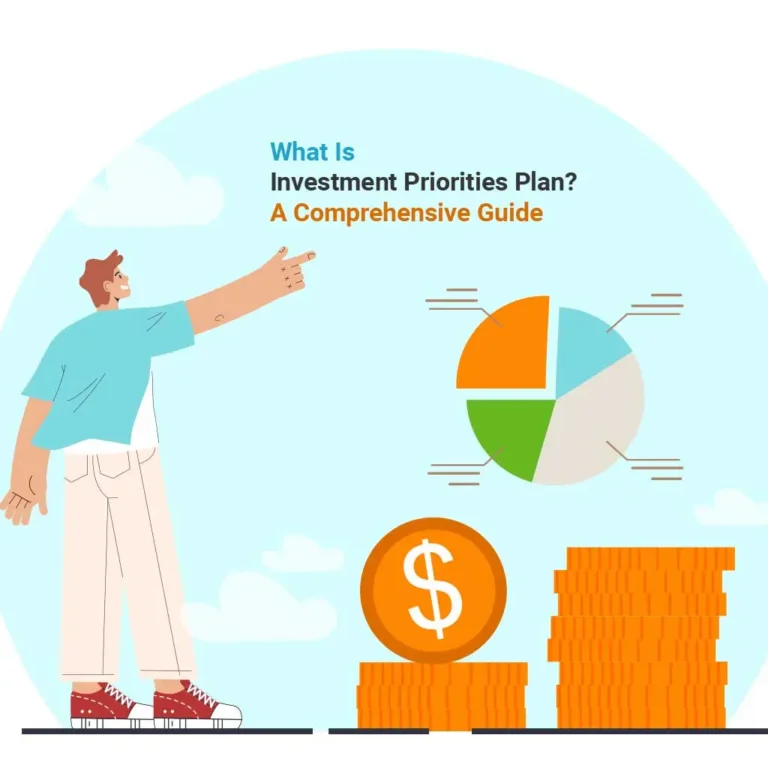In today’s fast-paced financial landscape, understanding where your money is and how it’s working for you is more important than ever. A term that often pops up in financial discussions is “investable assets.” But What are Investable Assets, and why are they pivotal in your wealth-building journey? Dive into this blog as we unravel the significance of investable assets and their role in diversifying your wealth, ensuring a stronger and more resilient financial FOCUS.
Understanding Investable Assets
Investable assets refer to assets that are liquid or can easily be converted to cash. These assets encompass:
- Cash in checking and savings accounts
- Instruments like CDs and money market accounts
- Various financial securities, such as bonds, stocks, and mutual funds
- Accounts set aside for retirement and trusts.
Notably, tangible assets like homes, cars, art collections, jewelry, or other real estate investments do not fall under liquid or near-liquid assets. Essentially, investable assets represent the wealth you hold without having to liquidate any personal possessions or properties. For financial professionals, such as advisors and lenders, these assets are a vital metric of one’s financial health. Moreover, they offer a clear snapshot of the funds readily available to you should you encounter unexpected financial needs.

Why Do Investable Assets Matter?
When discussing financial planning and wealth management, we often hear about assets, but not all assets are created equal. The term “investable assets” refers to the portion of an individual’s total assets that can be used to generate future income or profit. The importance of understanding investable assets must be emphasized more. They are critical in crafting a well-diversified investment strategy and safeguarding one’s financial future.
Possessing investable assets is imperative to pave the way for financial prosperity and autonomy. The focus here is on assets that have the potential to grow in value over time. This category includes resources like cash, stocks, bonds, and various financial instruments, including mutual funds. Having these assets in your financial toolkit ensures you’re always prepared to capitalize on promising investment opportunities as they arise.
Furthermore, the judicious allocation of your funds is the cornerstone of amassing wealth in the long run. Embarking on your investment journey early, for retirement or other future aspirations, sets the stage for a more secure financial future!

How Do You Calculate Investable Assets?
Calculating your investable assets involves carefully reviewing your financial statements and identifying those assets that can be invested to generate returns. Common investable assets include:
- Cash and cash equivalents (savings accounts, money market accounts)
- Stocks and bonds
- Mutual funds
- Real estate investment trusts (REITs)
- Certificates of deposit (CDs)
- Other securities.
To determine your investable assets, focus on your liquid and near-liquid holdings. Aggregate these assets and then deduct any outstanding debts from the sum. It’s worth noting that while you may be tempted to consider your mortgage in this calculation, it’s typically viewed as a recurring “expense” rather than a debt.
One crucial distinction between assessing your investable assets and your net worth lies in their volatility. Net worth can experience more frequent fluctuations due to variations in the market values of your physical assets. On the other hand, while investable assets vary with market conditions and existing debts, their alterations are less pronounced since they aren’t grounded in physical assets.
If you’re contemplating purchasing a new home or seeking financial advisory services, it’s beneficial to gauge your investable assets beforehand. This not only provides insight into your financial standing but also assists in strategizing future investments. Moreover, certain brokerage entities necessitate a minimum initial investment. Awareness of your investable assets ensures you make informed decisions about the right firm for your financial needs.
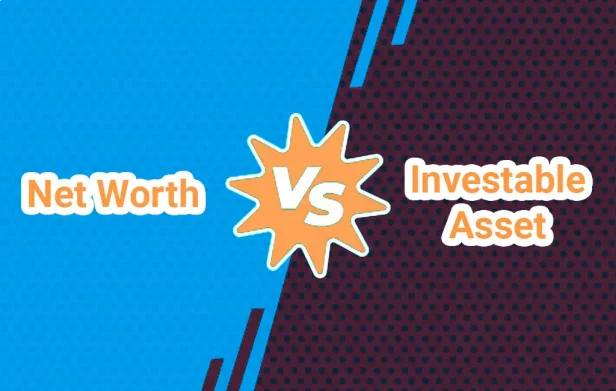
Net Worth vs. Investable Asset
While the terms might be used interchangeably, net worth and investable assets differ. Your net worth is the total value of everything you own (assets) minus everything you owe (liabilities). This includes your home, cars, jewelry, personal belongings, and even investable assets.
On the other hand, as mentioned, investable assets are strictly those that can be invested to generate a return. For example, while your house contributes to your net worth unless it’s generating rental income or is intended for resale, it may not be considered an investable asset in the traditional sense.
While many individuals gauge their financial well-being through their net worth, others lean towards investable assets as their metric of choice. So, what distinguishes one from the other? At its core, investable assets focus solely on liquid and near-liquid holdings, deliberately excluding tangible assets like properties, lands, and collectible items like fine art.
In contrast, net worth provides a more comprehensive picture, incorporating both liquid assets and physical properties. However, a potential pitfall of using net worth as a financial barometer is its susceptibility to change. Due to shifting market values associated with tangible assets, one’s net worth can experience significant fluctuations over relatively short periods.

How to Build Your Own Investable Assets to Ensure Financial Wellness
Creating a robust foundation of investable assets is crucial in the journey toward financial security and independence. These assets, which can be swiftly turned into cash or already exist as liquid funds, play a pivotal role in building and safeguarding wealth. But how can one methodically and strategically build these assets? Here are some key steps to consider:
1. Fund Your 401(k) With Matching Funds
A 401(k) is more than just a retirement savings plan; it’s a vehicle for wealth accumulation. If your employer offers matching contributions, it’s imperative to capitalize on this opportunity. By contributing enough to qualify for the full match, you’ll receive “free money” that can grow over time, bolstering your investable assets. Overlooking this benefit is akin to leaving money on the table.
2. Establish a Robust Emergency Fund
Before diving into more volatile investments, having a cushion is vital. An emergency fund, ideally covering three to six months of living expenses, ensures that unexpected financial setbacks won’t force you to liquidate investments at inopportune times. This fund acts as a safety net, allowing your other investable assets to thrive and grow without interruption.

3. Reduce Risk Through Diversification
“Don’t put all your eggs in one basket.” This age-old adage rings especially true in the realm of investing. Diversifying your investments across various asset classes and sectors minimizes the risk of significant losses. If one asset or sector underperforms, others might perform well, balancing the overall performance of your portfolio. Diversification smoothens the investment journey, mitigating drastic ups and downs.
4. Take Advantage of Compound Interest
Often referred to as the ‘eighth wonder of the world,’ compound interest has the power to exponentially grow your wealth. It’s the interest on the initial principal and the accumulated interest from previous periods. By reinvesting earnings and allowing your assets to grow over time, you harness the full potential of compounding, which can result in substantial gains in the long run. The key is to start early and be consistent.
5. Adjust Your Investment Portfolio as Necessary Through Rebalancing
Over time, as some investments thrive while others may lag, your portfolio can drift from its original asset allocation. Rebalancing involves adjusting your portfolio back to its target allocation. This not only ensures that you’re maintaining your desired level of risk but also can lead to buying low and selling high, optimizing the growth of your investable assets.

Tips for Managing Your Investable Assets
Navigating the financial waters can sometimes feel daunting. But with a clear strategy, managing your investable assets — those liquid and near-liquid treasures that form the backbone of your financial portfolio — can become an enriching experience. Here are some essential tips to guide you as you manage and optimize your investable assets:
1. Stay Informed
The world of finance is ever-evolving. Market conditions, interest rates, and global events can significantly impact your investable assets. By staying informed and updated on market news, you can make more educated decisions about buying, holding, or selling assets.
2. Diversify Across Asset Classes
Diversification is your shield against unforeseen market downturns. By spreading your investments across different asset classes, such as stocks, bonds, and commodities, you reduce the risk of any single investment tanking and jeopardizing your entire portfolio.
3. Regularly Review and Rebalance
Over time, some investments may outperform others, leading to an asset allocation that aligns differently from your original strategy. Regularly review your portfolio and rebalance, if necessary, to ensure it aligns with your financial goals and risk tolerance.
4. Leverage Technology
Today, numerous financial tools and apps can help you track, manage, and optimize your investable assets. Whether it’s an app for budgeting, a platform for investment analysis, or automated advisors, technology can be a powerful ally in managing your assets effectively.
5. Seek Professional Advice
While personal research is commendable, consulting with a financial advisor can provide invaluable insights. These professionals can offer tailored advice, identify potential investment opportunities, and help navigate complex financial scenarios.
6. Prioritize Liquidity Needs
Always be aware of your liquidity needs. If there’s a likelihood of needing a chunk of your investments for upcoming expenses, ensure that a portion of your assets is easily accessible and not locked in long-term investments.
7. Understand Your Risk Tolerance
Everyone has a unique risk threshold. Some investors sleep soundly with high-risk assets in their portfolio, while others prefer a more conservative approach. Assess and understand your risk tolerance, ensuring your investments mirror your comfort level.
8. Monitor Fees and Expenses
Often overlooked, fees and expenses related to investments can eat into your returns over time. Whether it’s brokerage fees, fund management charges, or transaction costs, always be aware of the costs associated and seek ways to minimize them.
9. Avoid Emotional Decision Making
The financial market can be a rollercoaster of emotions. Whether it’s the euphoria of a bull market or the anxiety of a downturn, making decisions based on emotions often leads to regret. Make investment decisions based on research, strategy, and long-term objectives rather than short-term market sentiments.

10. Plan for the Long-Term
While short-term wins can be exhilarating, the real power of investable assets lies in their long-term growth potential. Set long-term financial goals, stay consistent with your investment strategy, and resist the urge to make frequent, reactionary changes to your portfolio.
Final Words
So, what are investable assets, and how do they fit into your financial picture?
Investable assets are liquid and near-liquid assets that you can readily convert into cash or already exist in a cash form. They serve as a vital component of your financial health, acting as a buffer in uncertain times and providing opportunities for growth in favorable market conditions. Properly managing these assets – by understanding their nature, diversifying, staying informed, and making strategic adjustments – ensures that they not only preserve your wealth but also enhance it. In a world of economic fluctuations, clearly grasping your investable assets and making informed decisions around them is your ticket to long-term financial wellness and security.
Please remember that continuous learning is key to financial growth and stability. For those eager to expand their understanding further, EduCounting provides tailored courses to guide you at every stage. Whether you’re just starting or seeking advanced insights, there’s a course designed to empower you to tread the investment landscape with assurance and prowess.

FAQs
What are investable assets examples?
Investable assets refer to those assets that are liquid or near-liquid and can be quickly converted into cash or are already in cash form. Some common examples of investable assets include:
- Cash holdings in checking and savings accounts.
- Stocks, bonds, and mutual funds.
- Certificates of deposit (CDs) and money market accounts.
- Retirement accounts like 401(k)s, IRAs, and Roth IRAs.
- Exchange-traded funds (ETFs) and real estate investment trusts (REITs).
- Government and corporate bonds.
- Commodities like gold or silver bullion.
Is my 401k an investable asset?
Yes, your 401(k) is considered an investable asset. A 401(k) is a retirement savings plan sponsored by employers that allows employees to invest a portion of their paycheck before taxes are taken out. The funds in a 401(k) can be invested in a range of assets, usually including stocks, bonds, and mutual funds. While 401(k)s are designed for long-term growth and retirement savings, their value is part of your overall investable assets portfolio.
Is a house a financial asset?
A house, in itself, is considered a physical or tangible asset, not a financial asset. Financial assets, like stocks or bonds, are intangible and represent a claim to a future income stream. However, the equity you have in your house (the difference between the market value of the house and the outstanding mortgage balance) is often considered when evaluating your overall financial position. If you sell your house and turn its value into cash or liquid, it will be converted into an investable asset.


